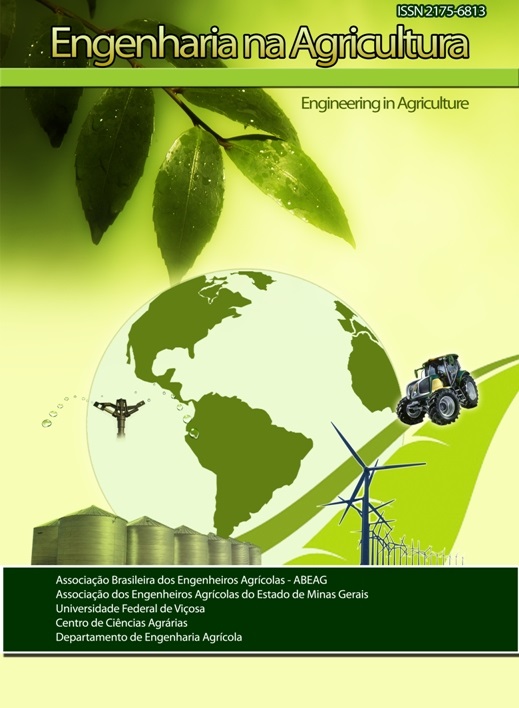ANÁLISE DA VARIABILIDADE ESPACIAL DOS ATRIBUTOS QUÍMICOS DO SOLO NA REMOÇÃO DE NUTRIENTE E DA PRODUTIVIDADE DA BRACHIARIA HUMIDICULA UTILIZADA EM RAMPAS DE ESCOAMENTO SUPERFICIAL NO TRATAMENTO DE ESGOTO SANITÁRIO OPERANDO EM CONDIÇÕES REAIS
DOI:
https://doi.org/10.13083/reveng.v25i1.735Palavras-chave:
Água residuária, características do solo, remoção de nutrientesResumo
No Brasil, o sistema de tratamento de esgoto em rampas de escoamento superficial foi implantando por algumas companhias de saneamento por ser considerado de baixo custo e apresentar eficiência de tratamento semelhante ou superior às obtidas pelos métodos convencionais, desde que seja manejado adequadamente. Este trabalho foi desenvolvido com o objetivo de avaliar a variabilidade espacial dos atributos químicos do solo, a remoção de nutrientes e a produtividade da gramínea Brachiaria humidicula, cultivada em rampa de escoamento superficial no tratamento de esgoto sanitário. O sistema funciona no município de Januária-MG, a rampa recebe efluente oriundo de um reator anaeróbio de fluxo ascendente (RAFA), precedido de tratamento preliminar (gradeamento). Foram coletadas 24 amostras de solo e de tecido vegetal em uma malha montada sobre as rampas. A partir das amostras de solo, determinou-se o pH, a condutividade elétrica (CE), a razão de adsorção de sódio (RAS), o percentual de sódio trocável (PST) e os teores de matéria orgânica (MO), fósforo (P), potássio (K), cálcio (Ca), magnésio (Mg), sódio (Na), ferro (Fe), zinco (Zn,) e cobre (Cu). Nas amostras de tecido vegetal determinou-se a produtividade de matéria fresca e seca e a remoção de nitrogênio (N), P e K. Observou-se elevada variação espacial da produtividade, onde o valor médio encontrado de matéria fresca e seca foi de 84 e 14 t ha-1, respectivamente. Os macronutrientes analisados, P e K, apresentaram valores médios de 577,6 e 23,9 mg dm-3, respectivamente. As maiores concentrações dos elementos Na, K, Zn, Mn, Mg, Ca, Fe e Cu foram obtidas nas regiões centrais da área, o que pode indicar um possível caminho preferencial do efluente. A remoção média de N, P e K foi de aproximadamente 360, 65 e 430 t ha-1, respectivamente.Downloads
Downloads
Publicado
Como Citar
Edição
Seção
Licença
Autores que publicam nesta revista concordam com os seguintes termos:
O(s) autor(es) autoriza(m) a publicação do texto na da revista;
O(s) autor(es) garantem que a contribuição é original e inédita e que não está em processo de avaliação em outra(s) revista(s);
A revista não se responsabiliza pelas opiniões, ideias e conceitos emitidos nos textos, por serem de inteira responsabilidade de seu(s) autor(es);
É reservado aos editores o direito de proceder a ajustes textuais e de adequação às normas da publicação.
A partir da submissão, o autor estará cedendo integralmente seus direitos patrimoniais da obra à publicação, permanecendo detentor de seus direitos morais (autoria e identificação na obra) e de acordo com a Licença Creative Commons, CC BY-NC.








 Esta obra está licenciada com uma Licença
Esta obra está licenciada com uma Licença 